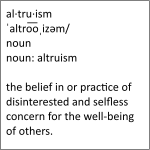 Adobe and Microsoft have issued their monthly updates for July, so even if you’d rather be doing anything else, you should be patching your computers.
Adobe and Microsoft have issued their monthly updates for July, so even if you’d rather be doing anything else, you should be patching your computers.
We’ll start with Microsoft. As usual, this month’s Security Update Release bulletin serves as little more than a link to the Security Update Guide (SUG), Microsoft’s labyrinthine replacement for the individual bulletins we used to get.
In my experience, the SUG is much easier to digest in the form of a spreadsheet, so the first thing I do there is click the small Download link at the right edge of the page, to the right of the Security Updates heading. If you have Excel — or something compatible — installed, you should be able to open it directly.
Once the spreadsheet is loaded, I recommend enabling the Filter option. In Excel 2007, that setting is in the Sort & Filter section of the Data ribbon (toolbar). This makes every column heading a drop-down list, which allow you to select a particular product or platform, and hide everything else.
Analysis of this month’s updates from the SUG spreadsheet shows that there are sixty-two distinct updates, addressing fifty-three security vulnerabilities in Flash, Internet Explorer, SharePoint, Visual Studio, Edge, Office applications, .NET, and all supported versions of Windows. Seventeen of the updates are flagged as Critical.
As for Adobe, there are updates for Flash (version 30.0.0.134) and Acrobat Reader DC (version 2018.011.20055). The Flash update fixes two vulnerabilities, one of which is Critical. The Acrobat Reader DC update includes fixes for over one hundred security bugs.
 Despite the major version increment, Firefox 62.0 doesn’t really have any new features worth mentioning. However, it’s an important update, because it addresses at least nine security vulnerabilities that range from Low to Critical in severity.
Despite the major version increment, Firefox 62.0 doesn’t really have any new features worth mentioning. However, it’s an important update, because it addresses at least nine security vulnerabilities that range from Low to Critical in severity. boot13
boot13
 It’s update time again.
It’s update time again. One of Windows 10’s most frustrating features is the way it installs updates. Unless you’re using an enterprise version, updates are almost completely out of your control. You can’t prevent them from installing, and there’s very little you can do to control when they install, or when your computer restarts to complate installation.
One of Windows 10’s most frustrating features is the way it installs updates. Unless you’re using an enterprise version, updates are almost completely out of your control. You can’t prevent them from installing, and there’s very little you can do to control when they install, or when your computer restarts to complate installation. Oracle’s latest
Oracle’s latest  Troy Hunt has put together
Troy Hunt has put together  Adobe and Microsoft have issued their monthly updates for July, so even if you’d rather be doing anything else, you should be patching your computers.
Adobe and Microsoft have issued their monthly updates for July, so even if you’d rather be doing anything else, you should be patching your computers. Have you been getting a lot of scam phone calls lately? I sure have. On both the land line and my business cell phone. Some callers claim that I’m being sued by the government or that I’m under investigation. Others want me to think there’s something wrong with my computer and that they have the only fix.
Have you been getting a lot of scam phone calls lately? I sure have. On both the land line and my business cell phone. Some callers claim that I’m being sued by the government or that I’m under investigation. Others want me to think there’s something wrong with my computer and that they have the only fix.